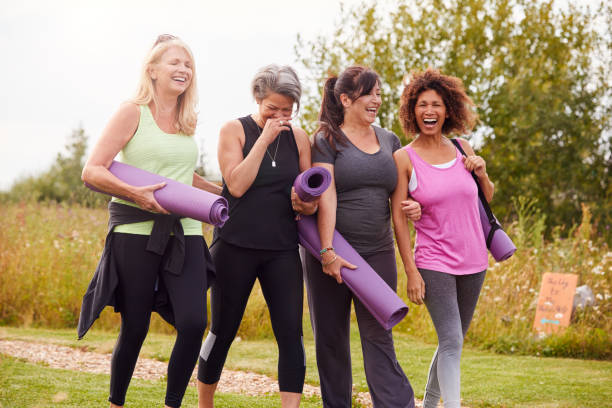Regular exercise can help prevent and manage a wide range of health conditions, as well as improve our physical and mental health.
As we age, our cardiovascular system begins to decline, making us more susceptible to heart disease and other related conditions. Regular exercise can help maintain or improve cardiovascular health by strengthening the heart and lungs, increasing blood flow, and reducing the risk of high blood pressure and cholesterol levels.
Better Bone Density
Osteoporosis is a common condition that affects many, particularly women. Exercise can help improve bone density and reduce the risk of fractures by putting stress on the bones and stimulating the production of new bone tissue.
Increased Muscle Strength and Flexibility
As we age, our muscle mass and flexibility can begin to decline, leading to a range of issues such as reduced mobility, falls, and injury. Strength training exercises such as weight lifting, push-ups, and lunges can help maintain or increase muscle mass and improve overall flexibility, balance, and coordination.
Weight Management
Weight management can become more challenging as we get older due to changes in metabolism and hormone levels. Regular exercise can help increase metabolism and burn calories, leading to weight loss or maintenance.
Reduced Risk of Chronic Disease
Exercise has been shown to help reduce the risk of chronic diseases such as diabetes, heart disease, and some types of cancer. Regular exercise can also help manage existing conditions such as arthritis and high blood pressure by improving overall health and reducing symptoms.
Improved Mental Health and Cognitive Function
Exercise is not just beneficial for physical health but also for mental health and cognitive function. It can help reduce symptoms of depression and anxiety, improve mood and self-esteem, and boost cognitive function such as memory and attention.
Reminders Before Starting an Exercise Program
Consult with a doctor. If you have any underlying health conditions or concerns, it’s important to consult with a doctor before starting a new exercise routine. They can help you determine what types of exercises are safe for you and provide guidance on how to modify exercises to meet your needs.
Hydrate. It’s important to stay hydrated before, during, and after exercise to help prevent dehydration and other related conditions. Make sure to drink plenty of water or other hydrating fluids before beginning your workout.
Warm-up. A proper warm-up can help prepare your body for exercise by increasing blood flow, raising body temperature, and improving flexibility.
Wear appropriate clothing and footwear. Choose clothing that allows for a full range of motion and footwear that provides adequate cushioning and support for your chosen activity.
Set realistic goals. Start with a lower intensity and gradually increase your workout over time. Make sure to listen to your body and avoid pushing yourself too hard, especially when starting out.
Here is a sample exercise program for a 50 year old female, which you can do at home or in a gym like Planet Fitness.
Warm-up
5-10 minutes of light cardio such as brisk walking, jogging on the spot, or cycling on a stationary bike.
Strength Training
Strength training is crucial for maintaining muscle mass, bone density, and overall health.
- Squats: 2 sets of 10-12 reps
- Lunges: 2 sets of 10-12 reps
- Push-ups: 2 sets of 8-10 reps (modified push-ups from knees or against a wall if necessary)
- Plank: 2 sets of 30 seconds
- Bicep curls: 2 sets of 8-10 reps (using dumbbells or resistance bands)
- Tricep dips: 2 sets of 8-10 reps (using a bench or sturdy chair)
Cardiovascular Exercise
Cardiovascular exercise helps to strengthen the heart and lungs, and can also help with weight management and stress reduction.
- Brisk walking or jogging: 20-30 minutes
- Cycling: 20-30 minutes
- Swimming: 20-30 minutes
- Dancing: 20-30 minutes
Cool-down
5-10 minutes of light stretching exercises such as yoga, gentle stretching or foam rolling. Remember to stay hydrated and listen to your body, taking breaks or modifying exercises as necessary.
